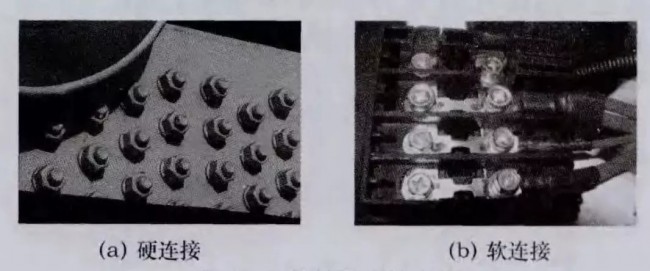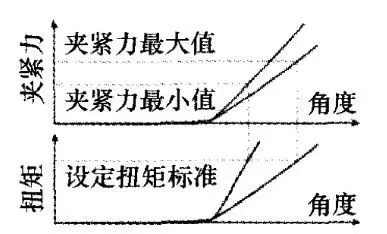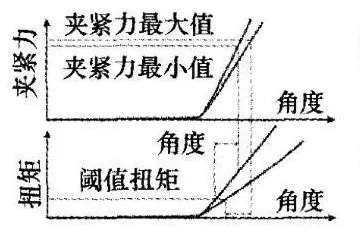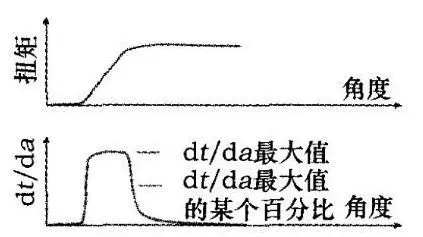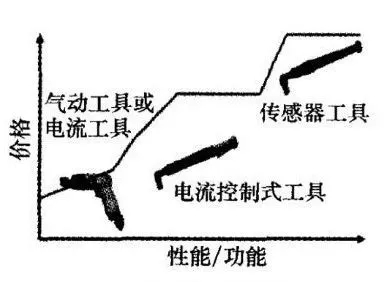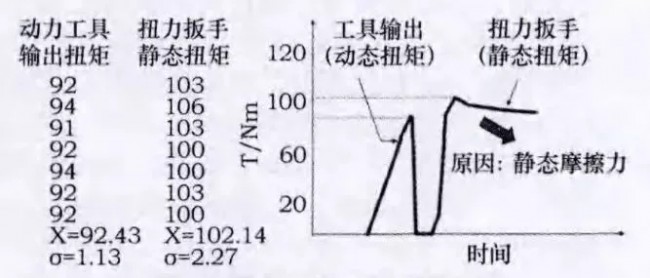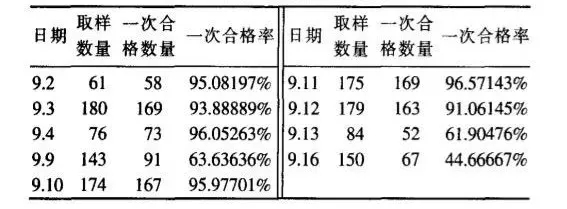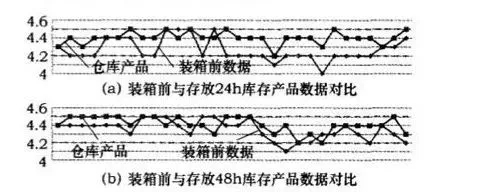Well-designed bolt-tight connection schemes, proper bolt tightening tools, and effective bolt tightening inspection methods are important factors in ensuring that each bolt in the harness is properly tightened. Focus on the fuse box in the automotive wiring harness, the fuse connection in the central electrical box, the bolt connection of the power line terminal, and the dynamic torque, static torque and torque attenuation in the bolt connection. In the automotive wiring harness, some wire-hole terminals, fuses, connecting pieces, etc. need to be bolted to the connection, and the clamping of the positive and negative terminals of the power harness also needs to be clamped by bolts. These components that need to be connected with bolts or nuts of M5, M6, M8 are usually distributed in the central electrical box, the fuse box of the front cabin harness, the fuse box of the instrument harness, the fuse box of the power harness, and the positive and negative poles of the power harness. On the connector. However, the functional and performance requirements of these bolted components are relatively high, and the failure of the bolt or nut tightening connection will directly affect the safety of the vehicle wiring harness and even cause serious quality accidents. This article describes the relevant aspects of the tightening connection of the bolts in the automotive wiring harness, and learns with colleagues. Type and classification of bolted connections    Common object connection methods include welding, bonding, riveting, bolt tightening, etc. The bolted connection is simple and convenient, can be disassembled and reassembled multiple times, standardized parts, and saves cost; the connection in the automobile wiring harness mainly has terminals Cold stamping connection, ultrasonic welding, resistance welding, bolting, etc. Bolted connections are usually divided into two types : hard and soft, as shown in Figure 1. The hard connection refers to the connection that reaches the target torque within 30° after reaching the bonding point; the soft connection refers to the connection that reaches the target torque by rotating 2 turns (720°) or more after reaching the bonding point. Figure 1 bolt tightening connection Common hard connections are connections between engine blocks, automotive chassis bridges, steel components, and the like. Common soft connections are between plastic and metal or between plastic and plastic, and between the fuse box and the fuse. For example, the bolted connections used in our central electrical box products and wire harness products are all soft connections. Control method and advantages and disadvantages of bolt tightening connection The control methods for bolt tightening are: 1 torque control / angle monitoring; 2 angle control / torque monitoring; 3 torque and angle control. Torque control refers to setting the maximum torque value of the tightening tool. When the value is reached, the tightening is completed. The angle control refers to setting the tightening tool to tighten the rotation to a certain number of turns (angle). When the value is reached, the tightening is completed; the yield point is Control means that the bolt is tightened before it is plastically deformed. The torque control method is the most familiar bolt tightening control method. The relationship between torque and clamping force is to provide the minimum clamping force in the presence of maximum and minimum torque. The use of torque control has the following advantages: 1 It is easy to achieve different levels of precision control, from ±25% pulse type tool to ±1% manual tightening shaft (sleeve); 2 has a large number of standard data for product and process design, and The application has a long history; 3 the process of verifying the validity of processes and equipment is very easy; 4 engineers are very familiar and well known. Disadvantages: 1 The accuracy of the clamping force is very poor, probably up to ±60%, which is greatly affected by the friction coefficient; 2 There is no fundamental way to prevent the bolt from breaking; 3 or more causes the bolt capacity utilization to be ±60% lower. The torque control curve is shown in Figure 2. The angle control is to avoid the influence of the wide variation of the friction coefficient on the clamping force in the elastic region. It is tightened by controlling the rotation angle, and the advantage of small torque variation is utilized. Figure 2 Torque control curve The use of angle control has the following advantages: 1 Relatively easy to implement, only the number of angles of tightening (number of turns) is specified; 2 the effectiveness of the process and product is relatively easy to check; 3 the cost and accuracy requirements of on-site repair are acceptable; 4 bolt utilization Greatly improved. Disadvantages: 1 Standard tightening specifications are usually not directly used. Some connection analysis/laboratory analysis work must be done to determine the tightening state to meet the requirements; 2 can not be verified by using a torque wrench to re-compact; 3 tools also need to have torque and angle measurement capabilities. It is difficult to check the performance of the tool under the mass production condition by using the angle control in the plastic zone of the bolt. The cost of setting and verifying the product parameters is high, the bolt can not be reused, and it is difficult to determine the tightening of the bolt during plastic deformation. Angle, control and inspection are more difficult. It is impossible for us to continue to use a bolt that is about to be broken after plastic deformation. For the same reason, the utilization rate of the bolt is very high, and the angle control method of the elastic deformation zone is generally adopted. The angle control curve is shown in Figure 3. Figure 3 angle control Yield point control is the most difficult method of tightening control. It requires professional and precise instruments to perform multiple measurements and test analysis. The process is difficult to test and the equipment is expensive. Generally, the yield point control is not used (Fig. 4). . Figure 4 yield point control Combined with the characteristics of the bolt connection in the fuse wire box and the central electrical box in the automotive wire harness product, this paper focuses on the torque control and inspection method of the bolt tightening connection. Bolt tightening tool level and selection Commonly used bolt tightening and measuring tools are as follows: wrench, manual sleeve, electric screwdriver (sleeve), pneumatic impact wrench, 咔嗒 torque wrench, digital torque wrench, pointer torque wrench, etc. The pointer torque wrench can also be used as a tool for torque inspection. Figure 5 shows a common tightening tool. Figure 5 Common tightening tools The tightening tools are further divided into three categories according to the tool category and tightening accuracy and performance. Twisting tools commonly used in wire harness manufacturing companies include wrenches, manual torque wrenches, electric screwdrivers (sleeve), pneumatic impact wrenches, digital torque wrenches, and pointer torque wrenches. As can be seen from Figure 5, most of the wire harness manufacturers' bolt tightening tools are in Class 1. Only the bolt torque testing tools use digital torque wrenches or pointer torque wrenches, and there is still a huge room for improvement in bolt tightening tools. Another unavoidable problem is the cost problem. The higher the degree of automation and intelligence of the tools, the more the cost of tightening tools increases tens of times, resulting in an increase in the manufacturing cost of related products, which requires analysis based on cost and value related data. Use a suitable tightening tool. Figure 6 shows the tightening tool category. Figure 6 tightening tool category Bolted dynamic torque and static torque Dynamic torque refers to the maximum peak value measured when the fastener is fixed. Torque wrenches and both electric and pneumatic tools can apply dynamic torque. Dynamic torque cannot be measured after the fastener is tightened. Static torque refers to the torque that is manually tightened after tightening to make the bolt rotate again or away from the tightening position (overcoming static friction), and the detected torque is static torque. Generally speaking, the dynamic torque is the torque setting value of the pneumatic torque wrench measured by a digital torque measuring instrument before the wire harness production line of a certain model. The static torque is the pointer of the quality inspector to the wire harness fuse box bolt or the digital torque wrench. The torque verification value obtained after verification. Dynamic torque is a tightening method approved by General Motors. This method is used for Bosch electric wrenches on powertrain assembly lines. When the bolt is re-detected with a hand wrench, static torque is used and the static torque is not a tightening method approved by General Motors. General Motors believes that dynamic torque is more accurate and repeatable than static torque. Dynamic torque readings are usually not the same as rechecking static torque readings. And different bonding points, different bolts, the degree of difference is different. Since static rechecking is not as accurate as the original dynamic torque and it will damage the good bond points, it is not a good idea to retest the qualified workpiece. Static re-inspection should be limited to workpiece rework, workpiece failure analysis or workpiece disassembly inspection. Do not perform static inspection of a good engine or transmission. In the manufacturing process of the wire harness, although the tightening tool of the bolt is torque corrected before the shift, the tightening tool of the bolt may be faulty during the actual production process, and the dynamic torque value of the bolt does not meet the design requirements, so only It is not enough to ensure the tightening quality by dynamic torque. It is still necessary to verify the static static torque of the bolts in the finished harness, and fully exert the static torque monitoring function to ensure that the bolts in the harness are tightened. Bolt connection torque attenuation Since the connected member is subjected to the clamping force of the bolt, deformation occurs after a certain period of time, and the clamping force between the connected members is reduced, which is called attenuation. The attenuation of the clamping force between the hard-connected members is small, and the attenuation of the clamping force of the soft-connected members is large. Normally, the torque of the soft connection is attenuated by 30% to 40%. For example, we set the bolt torque of M6 in the electrical box to T=6±1Nm on the product diagram of a wire harness. However, after the tool is tightened to reach the set torque, then the torque measurement tool can be used to statically measure the test torque again. Between ~5.0. The quality inspector usually judges that the bolt torque is unqualified, but can not find the cause of the torque reduction, causing great trouble. Because there is a decay process after the bolts are tightened, the wire bundle bolts are tightened, and the materials on the central electrical box are all soft copper, zinc tape and plastic. These are the soft connections in the bolt tightening. The material that is tightened later has a large elasticity or a large deformation, which causes the bolt torque attenuation to become smaller. Figure 7 is a schematic diagram of the bolt tightening force and torque attenuation. Figure 7 Schematic diagram of bolt tightening force and torque attenuation The static torque and dynamic torque values ​​on the soft connection are too small. Due to the different materials and hardness of bolts, nuts, washers, and clamps, the degree of dynamic torque attenuation varies. Under normal circumstances, 60% to 70% of the dynamic torque attenuation occurs within 30ms, and the softer the material, the greater the attenuation. Therefore, the measured value of the static torque of the bolt in the harness is less than the value of the dynamic tightening torque. Figure 8 is a graph of torque decay. Figure 8 Torque attenuation curve Figure 9 Hard-connected static torque measurements Static torque may be higher than dynamic torque due to higher static friction on the hard connection. The inflection point of the inverted V in Fig. 9 is the static torque on the hard connection measured by the torque wrench. Soft connection bolt tightening scheme design example In September 2013, the fuse box bolt of a certain type of wiring harness of our company was tightened, and then the main engine factory organized the relevant personnel to conduct an audit of our company. After the audit, the company required that the instrument harness bolts of this model be tightened. A second static torque verification is performed and a monthly summary of the torque verification data is required to be submitted to the quality department of the OEM. In the design of the instrument harness product, the torque of the M5 bolt in the fuse box is required to be 4.5 (+0.0, -0.3) Nm, and the dynamic torque when the bolt is tightened or the static torque value after the bolt is tightened is not indicated. The process file design strictly implements the product drawing design 4.5 (+0.0, -0.3) Nm value, and the production workshop tightens the torque of the pneumatic torque impact wrench when the bolt is tightened to 4.5 Nm for the bolt tightening operation. However, after the wire harness is produced, the quality inspection department double-checks the bolt. The static torque of the bolt is usually jumped between 3.8 and 4.0 Nm, and the product is judged as unqualified, causing many disputes between the production department and the quality inspection department. In order to study the reasons for the variable torque of the bolts, after more than 2 months of actual tracking observation, different dynamic torque tightening bolt tests and data acquisition were used. In order to meet the requirements of the quality inspectors using the digital torque wrench to measure the static torque value between 4.2 and 4.5 Nm, respectively, the torque torque of the bolt tightening station is experimentally adjusted to 6 Nm, 5.9 Nm and 6.4 Nm. , tighten the bolts once, and the static torque values ​​measured after the harness is assembled are shown in Figure 10. Figure 10 Test product static torque curve As can be seen from Figure 10, the first pass rate of the products was 81.481%, 62.963%, and 52%, respectively. Due to the attenuation of the bolts, the measured static torque jump is very large, and the human factors of the measuring personnel are excluded. It can be concluded that the static torque of the soft-connected bolts varies too much, and the bolt torque tolerance band designed by the product drawings is too narrow. (0 ~ 0.3 Nm), so the bolt torque design value of this product can not meet the actual production needs, which is unreasonable design. In the case of no communication with the OEM, after the meeting review, it was decided to change the tightening scheme of the bolt. Set the dynamic torque of the pneumatic torque wrench to 3.8 Nm at the tightening station of the bolt, pre-tighten, and then manually tighten to 4.5 Nm with a torque wrench. After several days of observation sampling, the bolt torque of the soft connection can not meet the requirements once the product has passed the tightening verification after the attenuation. The bolt torque sampling data under normal production conditions for 9 consecutive days is shown in Table 1. The primary pass rate of the product cannot meet the production requirements at all. Table 1 Connection tracking torque tracking data In order to tighten the bolts to meet the product design 4.5 (+ 0.0, -0.3) Nm requirements, add a bolt torque verification station. After the wire harness 100% electrical inspection is passed, the accessories in the fuse box are installed, and the digital 100% bolt torque is verified and corrected by the digital torque wrench, and the verified or corrected torque value is recorded. During the static torque verification of the bolt, when the static torque is less than the design torque, the bolt is slowly tightened again to the design torque range; when the static torque is greater than the design torque, the bolt is slowly re-twisted slightly below the design torque range, and the bolt is slowly tightened again. To the design torque range. When the bolt is tightened, the rotation angle of the handle of the digital torque wrench is about 2°, that is, the digital torque wrench is slightly rotated, and the digital torque wrench indicator lights up. Then, after the wire harness is subjected to 100% appearance and dimensional inspection, the finished wire harness is packaged and stored. Figure 11 Inventory product inspection data In order to monitor the change of bolt torque in the bundle of stock products, the products were statically attenuated for 24 h and 48 h, respectively, and the samples were tested and compared. The torque changes of the bolts before and after stationary tend to be stable. Figure 11 shows the sample inspection data for inventory products. The test data also proves from another aspect that after the first 30 ms attenuation of the bolt, the torque attenuation is small for a long time and the product state is stable. to sum up Because during the static torque verification of the bolt, the instrument cannot measure the deformation state of the bolt thread after the set static torque is tightened, that is, the thread of the bolt or nut in the tightened state is in the elastic deformation zone or the plastic deformation zone. Adding a bolt torque verification station is not the best bolt tightening solution. Since the tolerance band of the bolt torque of the product is too narrow, and the variation of the bolt torque attenuation of the soft connection in the wire harness fuse box and the central electrical box is much larger than 0.3 Nm, there is a fact that the technical parameters of the product design are unreasonable. In addition, in the process of product design, the torque range value and tolerance band of soft connection and hard connection should be designed according to the actual situation of bolt tightening, in order to meet the actual needs of the product. The soft connection of the wire harness fuse box and the central electrical box bolt has certain complexity and uncertainty. Only by selecting a suitable tightening tool and adopting a reasonable tightening scheme can the safety and quality of the wire harness product be maximized.
Refrigerant gas R406A is a mixture of three components
chlorodifluoromethane (R-22), isobutane (R-600a) and
chlorodifluoroethane (R-142b) in the ratio 55/4/41. This refrigerant was designed as a drop-in replacement for R-12 which is
compatible with the typical mineral oil lubricants used in R-12
systems. Since it is a zeotropic mixture, it has a range of boiling
points which may increase the effectiveness of the heat transfer
elements in refrigeration equipment.
R406A Refrigerant Gas,R12 Replacement Gas,R406A Replacement Gas ZHEJIANG ZHONGLAN REFRIGERATION TECHNOLOGY CO.,LTD , https://www.uiszl.com